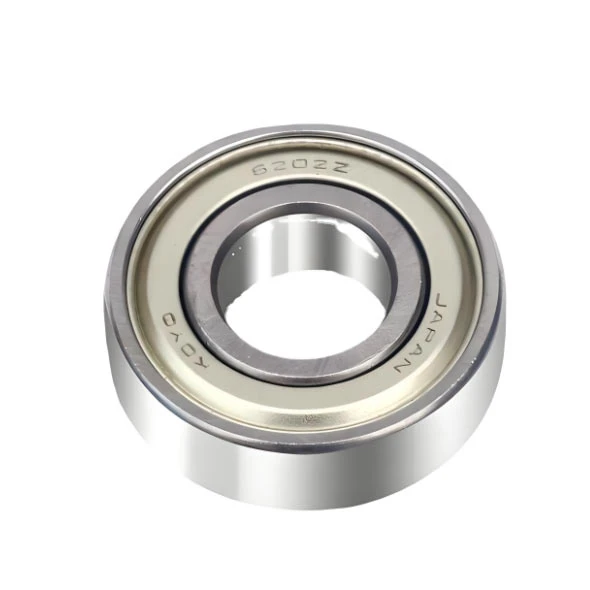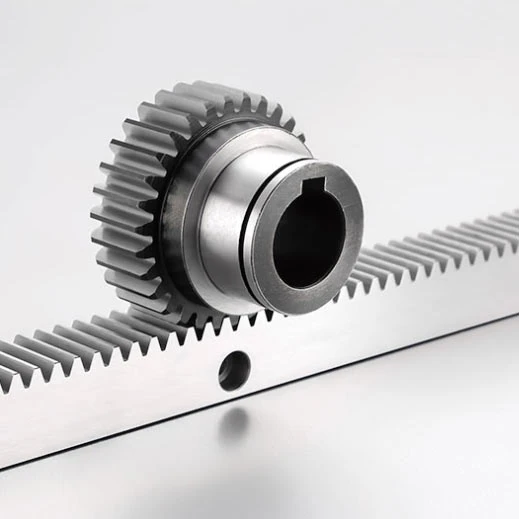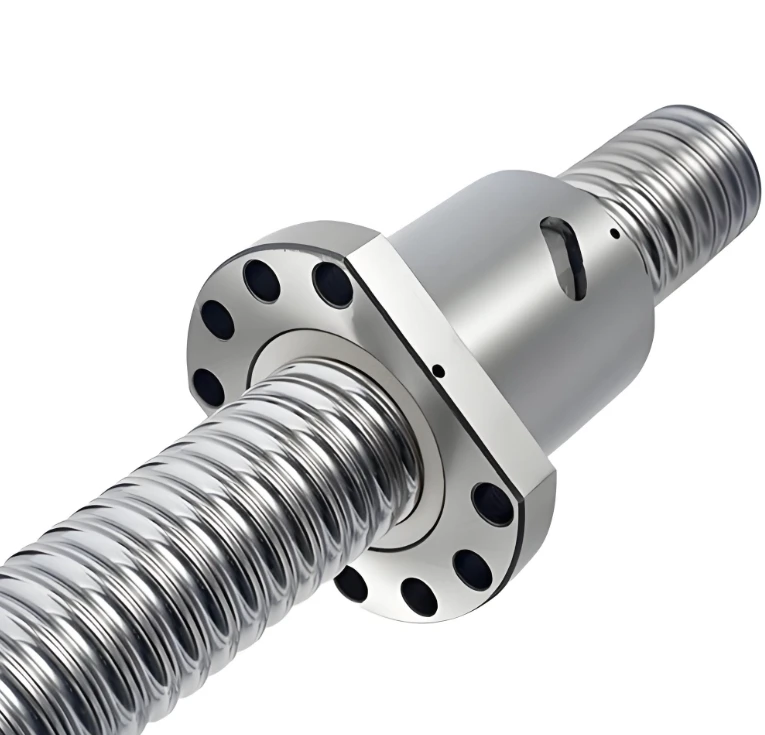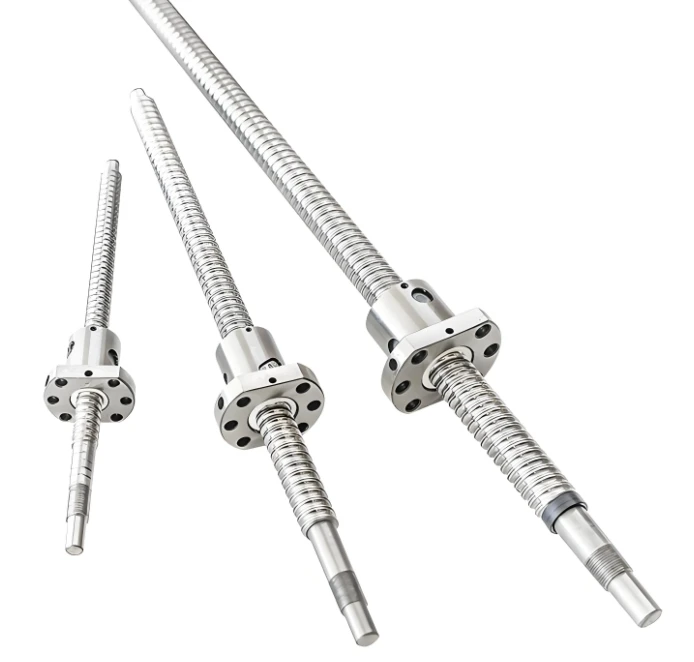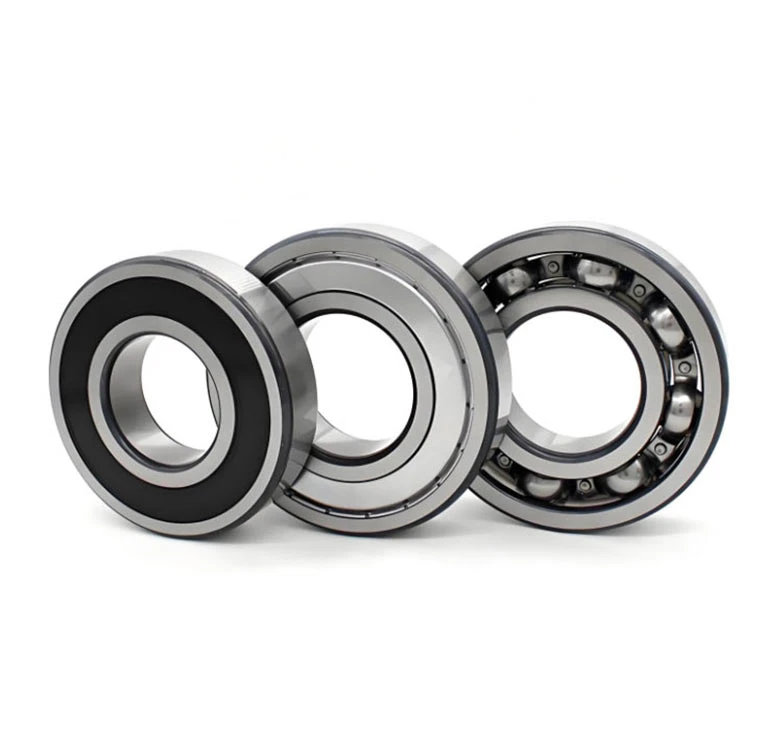Featured Ball Spline Solution
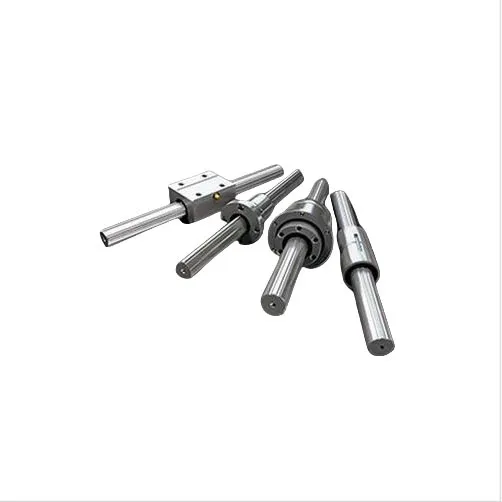
LBS Ball Screw Nut And Ball Spline Shaft-LBS30UU
Key Specifications: High-precision transmission, multi-directional load-bearing capacity, efficient power transmission.
Applications: Z-axis drive for automation equipment, automotive steering systems, positioning mechanisms for high-speed printing machines.
Explore Ball Spline Solutions"Ball splines represent a significant evolution in linear motion technology, combining the efficiency of rolling elements with the precision required for advanced automation." - International Journal of Mechanical Engineering
Understanding Ball Spline Technology

A ball spline is a precision mechanical component that transmits motion and power through the cyclic rolling of balls in precisely machined spline grooves. Unlike traditional splines, ball splines utilize recirculating ball bearings to minimize friction while maximizing precision and load capacity. The fundamental components include:
- Spline Shaft - Precision-ground cylindrical shaft with helical grooves
- Spline Nut/Sleeve - Housing containing ball recirculation channels
- Precision Balls - High-grade steel balls for efficient rolling contact
- Sealing System - Protective barriers against contaminants
Modern industrial applications increasingly demand the unique capabilities of ball spline systems. A recent study published in the Journal of Linear Motion Systems (2023) confirmed that properly maintained ball spline assemblies show a 40% reduction in energy consumption compared to traditional linear bushings when implemented in robotic applications.
Ball Spline vs. Alternative Linear Motion Systems
| Parameter | Ball Spline | Ball Screw | Linear Bushings | Roller Guides |
|---|---|---|---|---|
| Load Capacity (Radial) | Very High | Medium | Low | High |
| Axial Stiffness | High | Very High | Low | Medium |
| Precision (Positioning Accuracy) | ±0.005mm | ±0.003mm | ±0.05mm | ±0.01mm |
| Simultaneous Rotation/Translation | Yes | No | No | Limited |
| Maximum Speed | 5m/s | 3m/s | 2m/s | 4m/s |
| Lifespan Under Optimal Conditions | 20,000+ hrs | 15,000+ hrs | 8,000+ hrs | 15,000+ hrs |
| Torsional Rigidity | High | Medium | Low | High |
Technical Performance Trends
Ball Spline Applications in Modern Industry
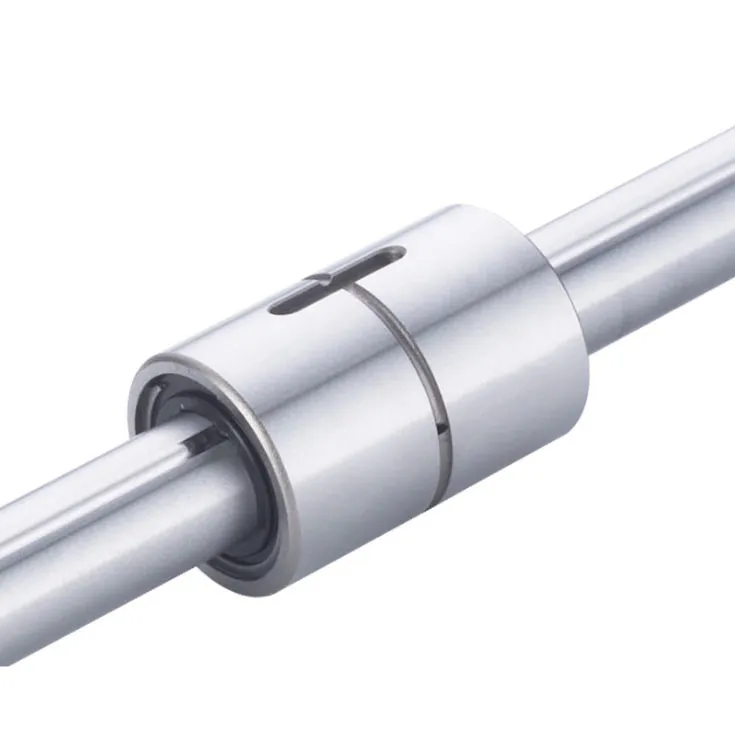
Industrial Robotics
Precision 6-axis robotic arms utilize ball splines in their joints for simultaneous rotation and linear movement. According to Robotics Automation Journal, this combination improves positioning repeatability by 0.002mm.

Automotive Steering Systems
Electric power steering mechanisms increasingly incorporate ball splines to handle torque and steering position feedback, improving responsiveness while reducing backlash to under 0.1°.
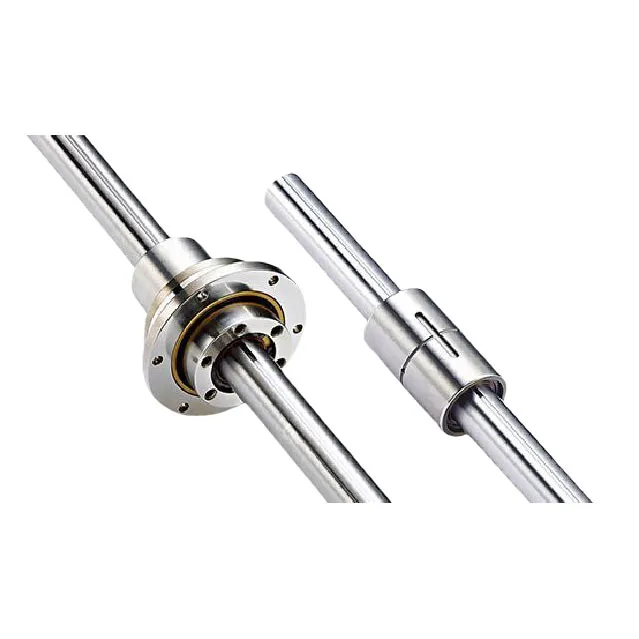
Semiconductor Manufacturing
Wafer handling robots rely on ball spline systems for contamination-free movement in clean room environments, achieving position accuracy of ±2 microns at speeds exceeding 1.5m/s.
"The integration of high-precision ball spline systems has been fundamental to achieving micron-level positioning in next-generation lithography equipment." - Proceedings of the Precision Engineering Society
Technical Specifications: Key Parameters
Shaft Diameter
Standard sizes: 15mm, 20mm, 25mm, 30mm (LBS series)
Custom diameters up to 120mm available
Load Capacities
Dynamic load: 7.5kN - 65kN
Static load: 15kN - 145kN
Precision Grades
Standard Grade: ±0.015mm/300mm
Precision Grade: ±0.005mm/300mm
Speed Ratings
Maximum linear speed: 5m/s
Maximum rotational speed: 500rpm
Material Specifications
Shaft: Chromium-molybdenum steel (SCM435)
Ball bearings: AISI 52100 chrome steel
Torque Transmission
Maximum torque: 50Nm - 850Nm
Torsional stiffness: 10 Nm/arcmin - 175 Nm/arcmin
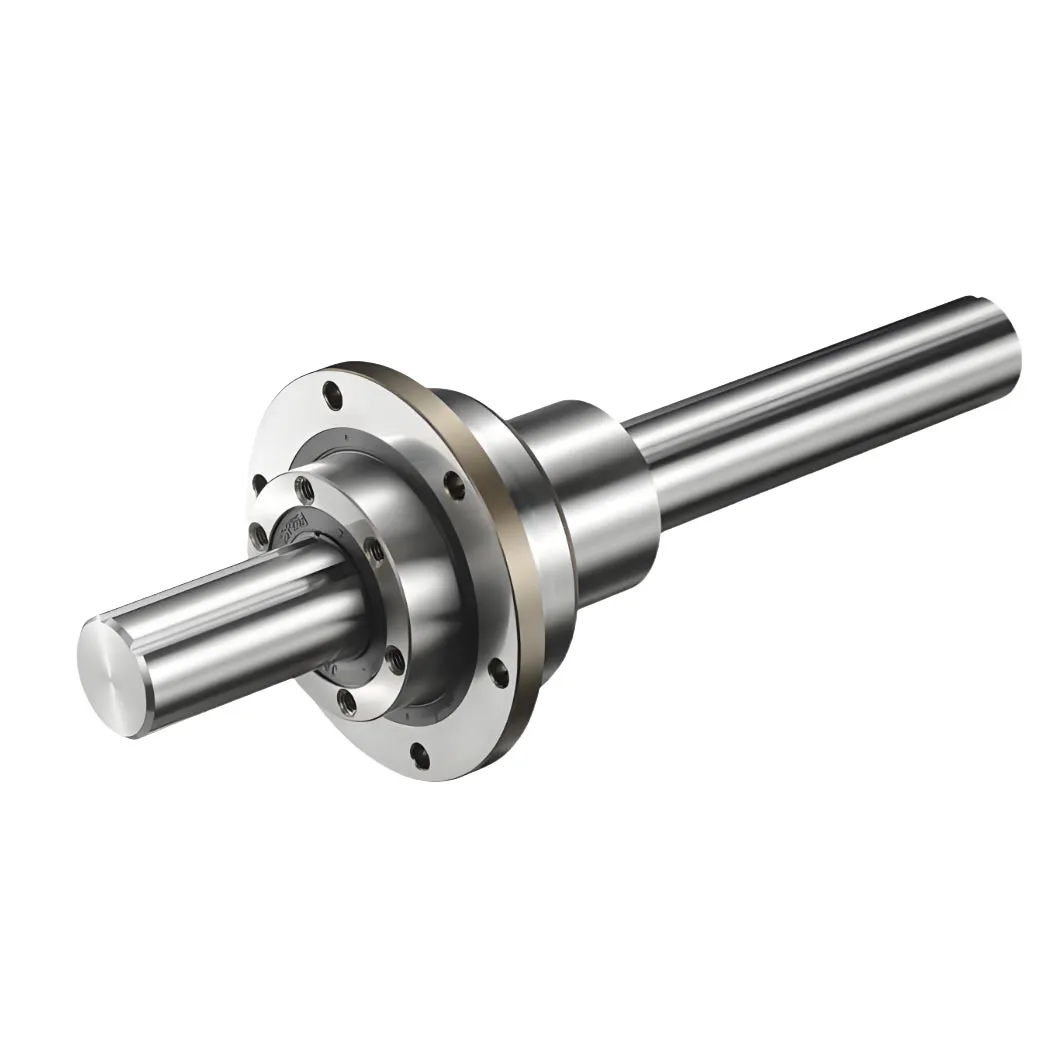
Professional FAQ: Ball Spline Technology
What materials are optimal for ball splines in corrosive environments?
For highly corrosive applications, we recommend martensitic stainless steel (SUS440C) shafts combined with specialized coating treatments that achieve over 500 hours in salt spray tests without performance degradation.
What torque specifications must be considered when sizing ball splines?
Ball spline sizing requires evaluating both continuous torque (Tcont) and peak torque (Tpeak) with a minimum safety factor of 1.5. Additionally, torsional rigidity requirements for the application must align with the spline's angular deflection specification.
How do installation tolerances affect ball spline performance?
Proper mounting alignment is critical. Shaft misalignment should not exceed 0.05mm/100mm and angular misalignment should stay below 0.05°. Noncompliance can reduce bearing life by up to 70% according to ISO 14728 installation standards.
What lubrication protocols ensure maximum ball spline longevity?
We recommend initial lubrication with ISO VG 32 mineral oil-based grease containing EP additives. Relubrication intervals depend on operational conditions: high-speed applications (50hrs), normal conditions (200hrs), low-speed (500hrs). Extreme environments require specialized formulations.
How do preload classes impact ball spline performance characteristics?
Preload classifications (P0, P1, P2) determine rigidity and backlash characteristics. P0 (standard clearance) has 0.05mm-0.1mm backlash for general applications. P2 (heavy preload) achieves near-zero backlash (
What certifications should manufacturers provide for industrial ball spline applications?
For critical applications, manufacturers should provide ISO 9001 certification, material traceability documentation, load test certificates per DIN 5480 standards, and RoHS compliance verification when applicable.
How do dynamic load ratings correlate with operational lifespan?
The basic dynamic load rating (C) determines the load capacity for a nominal life of 100,000 meters travel. Actual lifespan (L) is calculated as L = (C/P)3 × 100km, where P represents the actual radial load. Temperature, vibration, and contamination factors require additional adjustment.
Partnering with a Leading Ball Spline Manufacturer
At HEBEI YIDI IMPORT AND EXPORT TRADING CO., LTD., we've established ourselves as a premier ball spline manufacturer with ISO-certified production facilities covering 25,000m². Our comprehensive capabilities include:
- CNC grinding precision up to 0.001mm tolerance
- Dedicated metrology laboratory with CMM and surface analysis equipment
- Custom ball spline design services with FEA simulation
- In-house heat treatment with controlled atmosphere furnaces
- Complete product testing including accelerated life testing
Our LBS Ball Spline Nut and Ball Spline Shaft series are particularly suitable for demanding industrial applications requiring high-precision linear and rotational motion synchronization.
"Comprehensive testing by the Linear Motion Engineering Consortium confirms that precision ground ball splines can reduce positional hysteresis by approximately 40% compared to broached spline alternatives in servo-controlled applications." - Report from the Linear Motion Engineering Consortium (2023)
Industry Resources & Technical References
Further Reading:
- International Standards for Linear Motion Systems - ISO 14728:2015
- "Precision Ball Spline Selection Guide" - Linear Motion Engineering Handbook (2022 Edition)
- ASME B5.54-2005 Standards for Motion Control Components
- Advances in Linear Motion Technology - Machine Design Magazine (2023)
- SAE J670 Vehicle Dynamics Terminology (including steering systems)
- "Tribology of Recirculating Linear Systems" - Society of Tribologists and Lubrication Engineers (STLE) Publication
- 2023 Robotics Market Analysis - Robotic Industries Association
Expert Consultation: Connect with our engineering team for application-specific ball spline solutions
Request Technical Specifications
